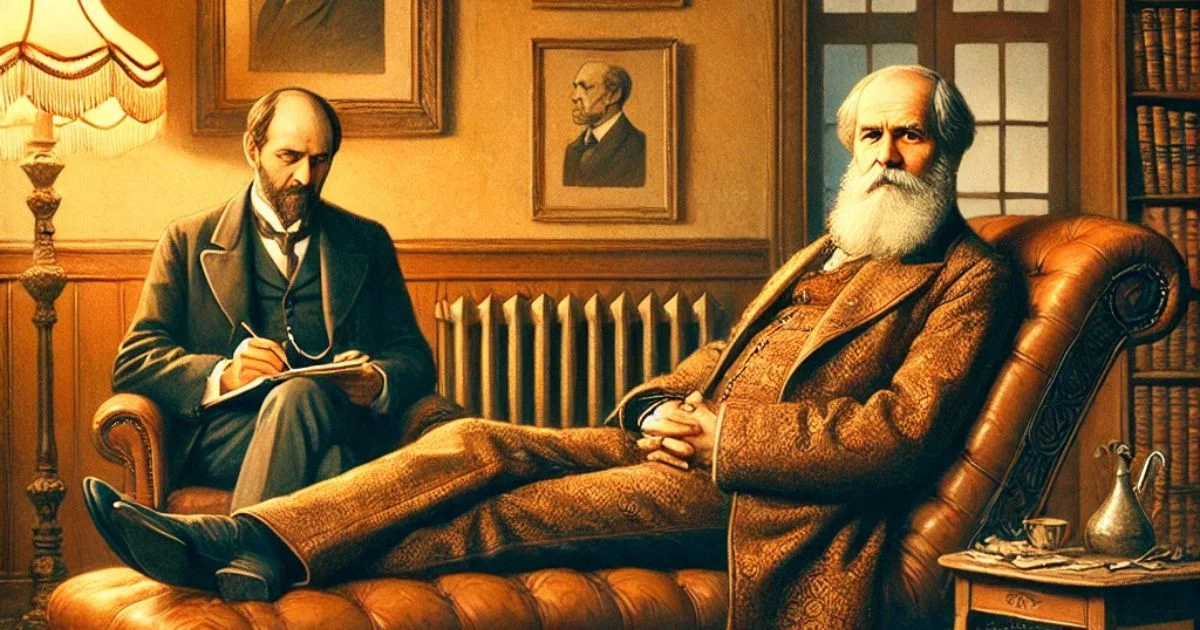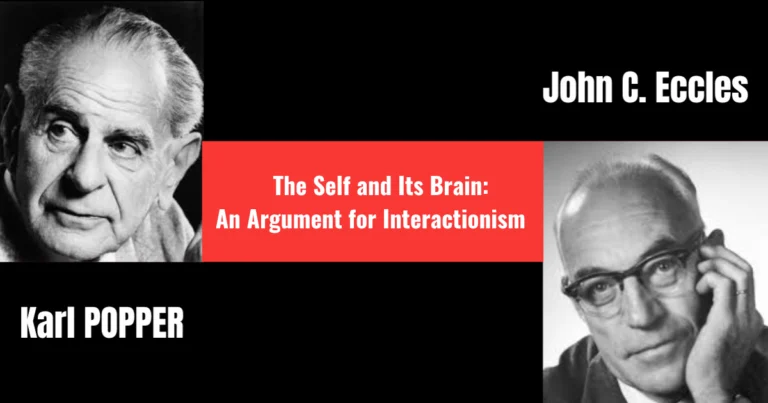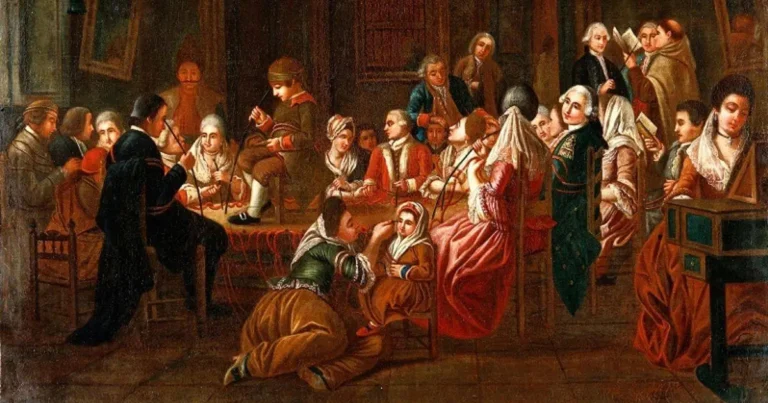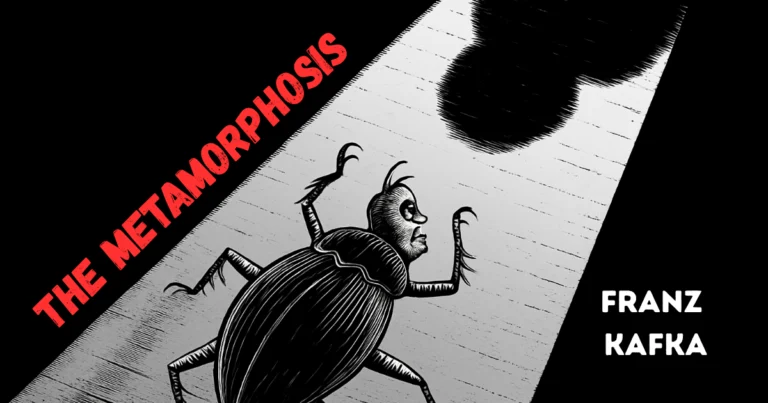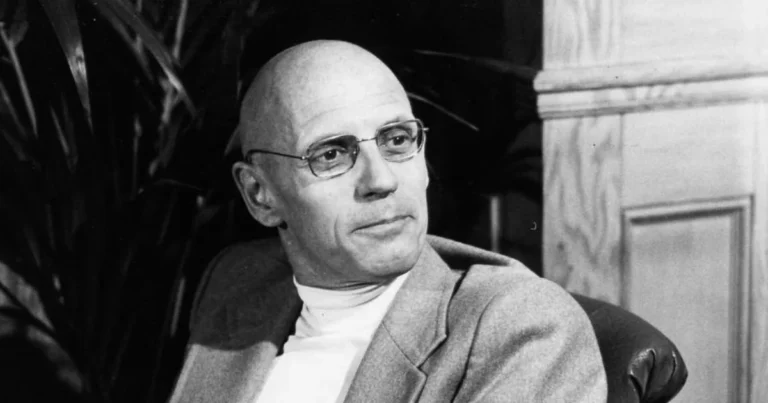Dostoevsky through Freud’s eyes
Born in 1821, at a time of significant upheaval in Russia, Fyodor Dostoevsky has long been heralded as one of the greatest novelists of all time. He possessed an unparalleled gift for probing the depths of the human psyche with remarkable intensity. His works, both philosophical and psychological, reveal an exceptional grasp of the motivations, internal conflicts, and moral dilemmas driving his characters. Whether it is Raskolnikov in Crime and Punishment, consumed by an endless struggle between guilt and the justification of his crime, or Ivan Karamazov in The Brothers Karamazov, torn between faith and doubt, Dostoevsky manages to capture the subtle emotional currents that seize the human mind with an almost psychoanalytic precision.
Dostoevsky’s oeuvre resonates so powerfully that it has transcended literature, inspiring thinkers across multiple fields, including psychoanalysis. Sigmund Freud, the founding father of psychoanalysis, was particularly fascinated by Dostoevsky’s life and writings. In his essay “Dostoevsky and Parricide,” Freud goes beyond analyzing the author’s characters to examine the man himself. To Freud, Dostoevsky’s works offered fertile ground for illustrating his theories on the Oedipus complex, unconscious guilt, and the conflicts among the psyche’s various structures (the id, ego, and superego).
The intersection of Dostoevsky’s literary genius and Freud’s psychoanalytic insight opens a captivating pathway into the universal psychological dynamics underlying human behavior. This article sheds light on the main themes Freud explores in his essay, emphasizing how Dostoevsky and his works were interpreted through a Freudian lens.
Literary genius meets psychoanalysis: Freud’s vision of Dostoevsky
Sigmund Freud published his essay “Dostoevsky and Parricide” in 1928, at a time when psychoanalysis was gaining swift recognition as both a scientific discipline and a cultural force. Originally commissioned for an encyclopedia devoted to psychology and literature, this essay reflects Freud’s growing interest in literary figures as well as his ongoing exploration of the complex manifestations of the human psyche.
In the essay, Freud blends a biographical analysis of Dostoevsky with a psychoanalytic reading of his major works, most notably The Brothers Karamazov. He underscores both the deeply personal and universally resonant conflicts pervading the writer’s life, applying core psychoanalytic concepts such as the Oedipus complex, unconscious guilt, and destructive impulses. Far from limiting himself to a purely literary analysis, Freud aims to demonstrate how individual and familial traumas can be transformed into works of universal artistic significance.
Freud also proposes a bold hypothesis: Dostoevsky’s epileptic seizures might not have been purely neurological but psychosomatic, arising from repressed desires and overwhelming guilt. Although this interpretation has sparked debate and criticism, it illustrates Freud’s determination to explain complex phenomena through a psychoanalytic lens. In doing so, he offers a synthesis of his theories applied to an extraordinary literary figure.
Shadows of the father: Parricide and the Oedipus complex in Dostoevsky
A central focus of Freud’s essay is the Oedipus complex, which he applies both to Dostoevsky’s life and to his literary works. Freud argues that parricide is a recurring, pivotal theme in Dostoevsky’s universe, most vividly represented in The Brothers Karamazov. In that novel, the murder of Fyodor Pavlovich Karamazov by his illegitimate son Smerdyakov, with the tacit involvement of his other sons, symbolizes a rebellion against the paternal figure. For Freud, this fictional parricide reflects the unconscious desires Dostoevsky himself may have harbored toward his own father.
Freud draws a connection between Dostoevsky’s biography and this thematic obsession.
The author’s father, an authoritarian and often violent man, was murdered by his serfs in 1839, an event that left a profound mark on Dostoevsky. Freud suggests that in his youth, Dostoevsky may have experienced Oedipal fantasies of rebelling against his father, and the real-life murder only deepened his sense of insurmountable guilt.
Throughout Dostoevsky’s works, the moral and psychological consequences of parricide are explored with a depth that captivated Freud. For instance, both Ivan and Dmitri Karamazov wrestle with variations of hatred and guilt toward their father, illustrating the turbulent dimensions of the Oedipus complex. Ivan, in particular, struggles with the realization that his passivity and refusal to intervene indirectly enabled the murder, an inner conflict that symbolizes the tension among the id (unconscious desires), the ego (conscious awareness), and the superego (moral injunctions).
In this sense, Freud sees The Brothers Karamazov as a masterful literary depiction of the internal battles that define human experience. Parricide transcends mere criminality to become a universal psychological archetype, embodying the clash between desire and prohibition, love and hate, freedom and guilt. According to Freud, Dostoevsky’s portrayal of these conflicts illuminates the unconscious mechanisms shaping the human psyche.
Linking psychological conflict to physical ailment
Another cornerstone of Freud’s analysis is the concept that unconscious guilt plays a pivotal role in Dostoevsky’s life and work. Freud posits that the epilepsy Dostoevsky suffered from was not solely a neurological condition but had its roots in profound psychological turmoil. In his view, the seizures represented a physical manifestation of overwhelming guilt, especially in connection with the murder of Dostoevsky’s father.
Freud supports this hypothesis with biographical details. Dostoevsky perceived his father’s violent death as a form of divine punishment, which likely heightened his guilt surrounding Oedipal fantasies.
Even though these fantasies were repressed, they continued to influence his psyche, fueling intense internal strife. Freud interprets the epileptic seizures as a kind of psychological compromise, an indirect way of expressing suppressed guilt.
Controversial though it may be, this interpretation resonates with Dostoevsky’s recurring literary motifs of guilt, redemption, and sacrifice. In Crime and Punishment, for example, Raskolnikov is consumed by crippling guilt after committing murder, driving him to seek a kind of redemption. Similarly, in The Brothers Karamazov, the characters are continually grappling with questions of conscience and moral responsibility, mirroring the tensions between desire and guilt.
Freud extends this analysis, proposing that unconscious guilt is a universal force shaping individuals, cultures, and societies. In this light, Dostoevsky’s psychosomatic epilepsy stands as a symbol of universal human conflicts, with the body articulating what the psyche cannot. To Freud, Dostoevsky is both a victim of these conflicts and a profound witness to the unconscious mind’s power.
Dostoevsky’s characters under Freud’s microscope
Freud’s essay also highlights how Dostoevsky’s works reflect fundamental struggles among the id, ego, and superego, central concepts in Freudian theory. These unconscious, conscious, and moral forces collide to shape human psychology, and their tension is particularly evident in The Brothers Karamazov, where each character seems to personify one aspect of these psychic structures.
Ivan Karamazov, for example, embodies the clash between reason and faith, a typical crisis of the superego. His rejection of God and his attempt to live by purely rational principles cast him into an existential anxiety. This inner strife reveals the harsh demands of the superego, with its stringent moral standards, in stark contrast to the more primitive urges of the id. Ivan is tormented by visions, most notably that of the “Grand Inquisitor”, which symbolize his doubts and his deep anxieties about truth and justice.
In contrast, Dmitri Karamazov can be viewed as a personification of the id, driven by impulsive passions and immediate desires. His hotheaded nature and relentless pursuit of pleasure frequently clash with the moral and social expectations around him. Freud interprets this as an illustration of the id’s primal forces, which strive to assert themselves despite the restraints imposed by the ego and superego.
Lastly, Alexei Karamazov, the youngest brother, represents a fragile equilibrium among these forces. A novice in a monastery, he strives to reconcile the superego’s spiritual aspirations with the ego’s emotional and relational needs. His pursuit of harmony between lofty ideals and human reality mirrors the ego’s efforts to navigate both internal and external conflicts.
Freud contends that these psychological dynamics, so vividly portrayed by Dostoevsky, offer a unique window into the universal tensions that shape human experience.
The Karamazov brothers are more than mere fictional characters; they are symbols of the internal struggles everyone faces, instinct versus reason, freedom versus constraint, hope versus despair. To Freud, Dostoevsky is an artist whose depiction of these conflicts is so profound that it anticipates and exemplifies modern psychoanalytic theories.
Ultimately, Dostoevsky’s work transcends storytelling to become a deeply introspective journey, an invitation to explore the darkest and brightest corners of the human soul. Rather than providing easy answers, he raises fundamental questions about good and evil, faith and doubt, freedom and responsibility. His genius lies in his ability to give voice to the contradictory impulses that inhabit us all, challenging us to confront our own demons and reminding us of literature’s cathartic power as both a mirror and a crucible for our complex humanity. The enduring relevance of Dostoevsky’s work is a testament to the undeniable strength of his vision, a vision that continues to prompt readers to plumb the depths of their own inner lives.
References :
Dostoevsky, F. (1993). Crime and punishment (R. Pevear & L. Volokhonsky, Trans.). Penguin Classics.

Amine Lahhab
Television Director
Master’s Degree in Directing, École Supérieure de l’Audiovisuel (ESAV), University of Toulouse
Bachelor’s Degree in History, Hassan II University, Casablanca
DEUG in Philosophy, Hassan II University, Casablanca

